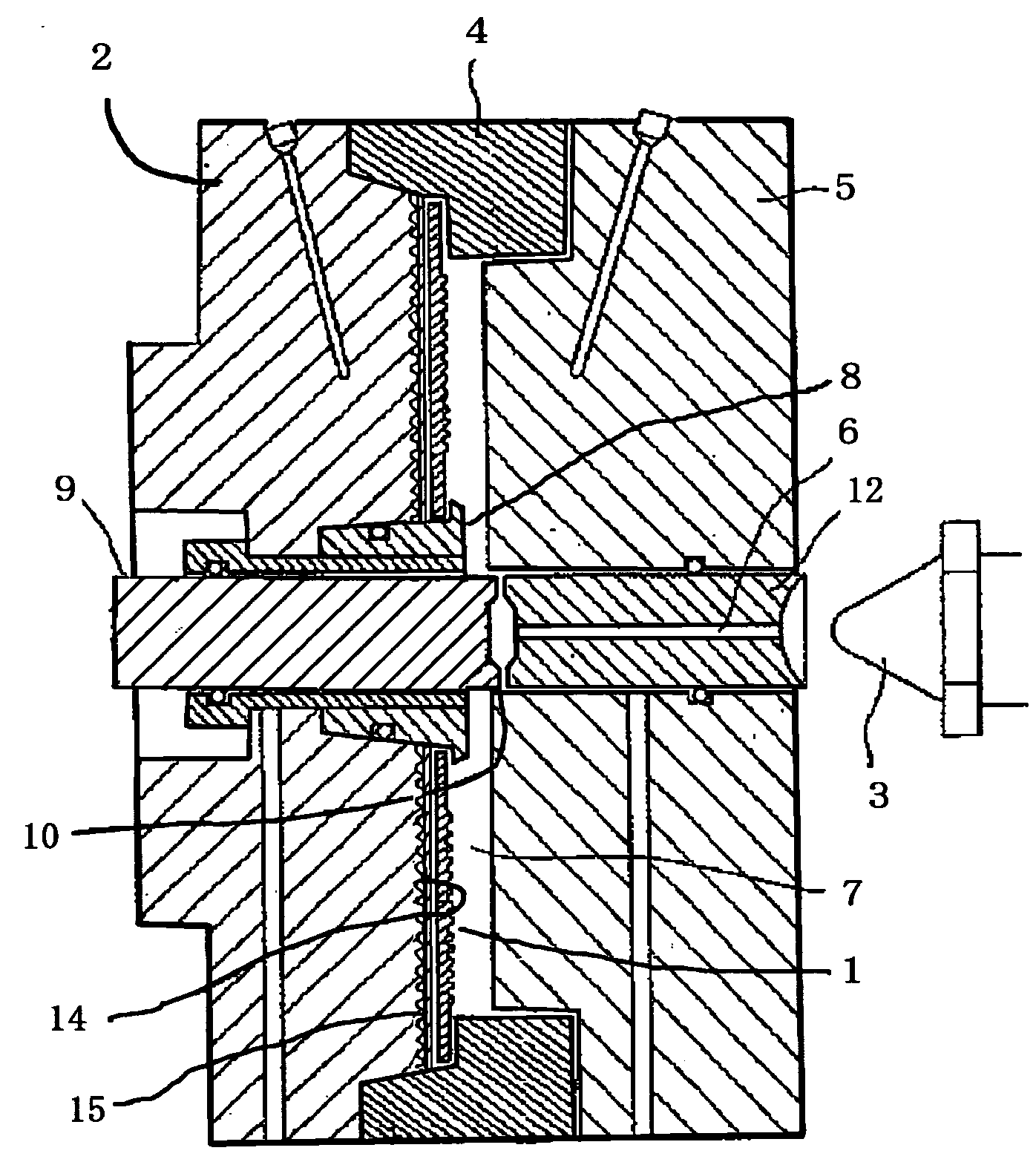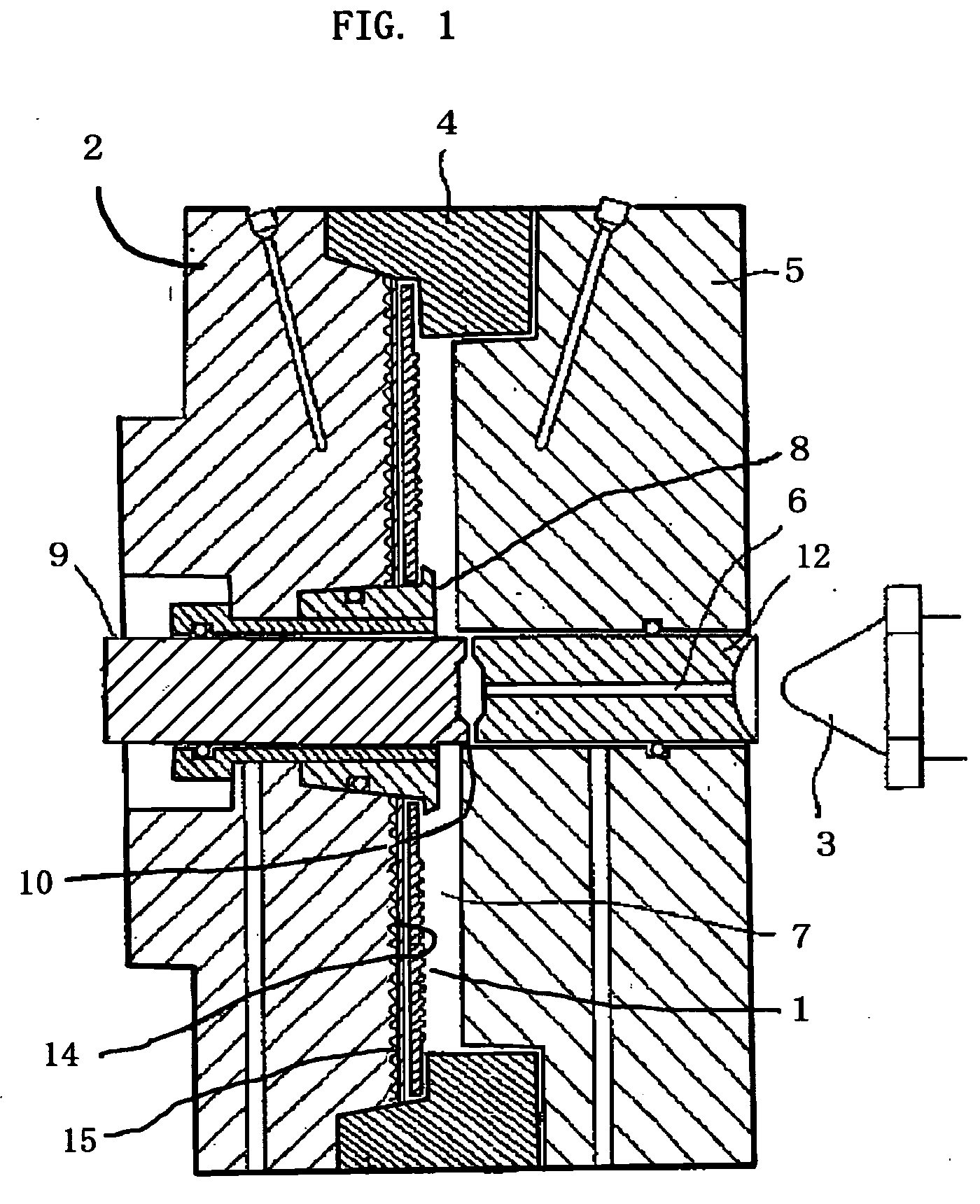Optical disc mold having diamond-like carbonaceous layer and a molding method using the same
- Summary
- Abstract
- Description
- Claims
- Application Information
AI Technical Summary
Benefits of technology
Problems solved by technology
Method used
Image
Examples
example 1
[0048] The cavity surface of the steel mold holding the stamper was subjected to mirror polishing, and the surface was subjected to scratch-brush finish in such a degree that the surface roughness Ra became approximately 1,000 Å and P-V approximately 10,000 Å. On the resultant surface, an SiC layer having a thickness of 0.5 mm was formed by flame spraying, and a diamond-like carbonaceous layer having a thickness of 1.5 μm was formed thereon. It should be noted that the diamond-like carbonaceous layer was formed by a self-bias RF plasma CVD method, under the following conditions: material gas: C2H4 (0.017 Pa.m3.s−1), electric source: RF, operating pressure: 66.5 Pa, input power: 500 W, layer-forming rate: 100 nm / min. The composition of the layer was CH0.21, and the resultant carbon layer was a diamond-like carbonaceous layer.
example 2
[0049] The cavity surface of the steel mold holding the stamper was subjected to mirror polishing, and the surface was subjected to shot peening in such manner that the surface roughness Ra became approximately 1,000 Å and P-V approximately 10,000 Å. On the resultant surface, a diamond-like carbonaceous layer having a thickness of 1.5 μm was formed. It should be noted that the diamond-like carbonaceous layer was formed by substantially the same procedure as in Example 1.
PUM
| Property | Measurement | Unit |
|---|---|---|
| Composition | aaaaa | aaaaa |
| Surface roughness | aaaaa | aaaaa |
Abstract
Description
Claims
Application Information
 Login to View More
Login to View More - R&D
- Intellectual Property
- Life Sciences
- Materials
- Tech Scout
- Unparalleled Data Quality
- Higher Quality Content
- 60% Fewer Hallucinations
Browse by: Latest US Patents, China's latest patents, Technical Efficacy Thesaurus, Application Domain, Technology Topic, Popular Technical Reports.
© 2025 PatSnap. All rights reserved.Legal|Privacy policy|Modern Slavery Act Transparency Statement|Sitemap|About US| Contact US: help@patsnap.com


